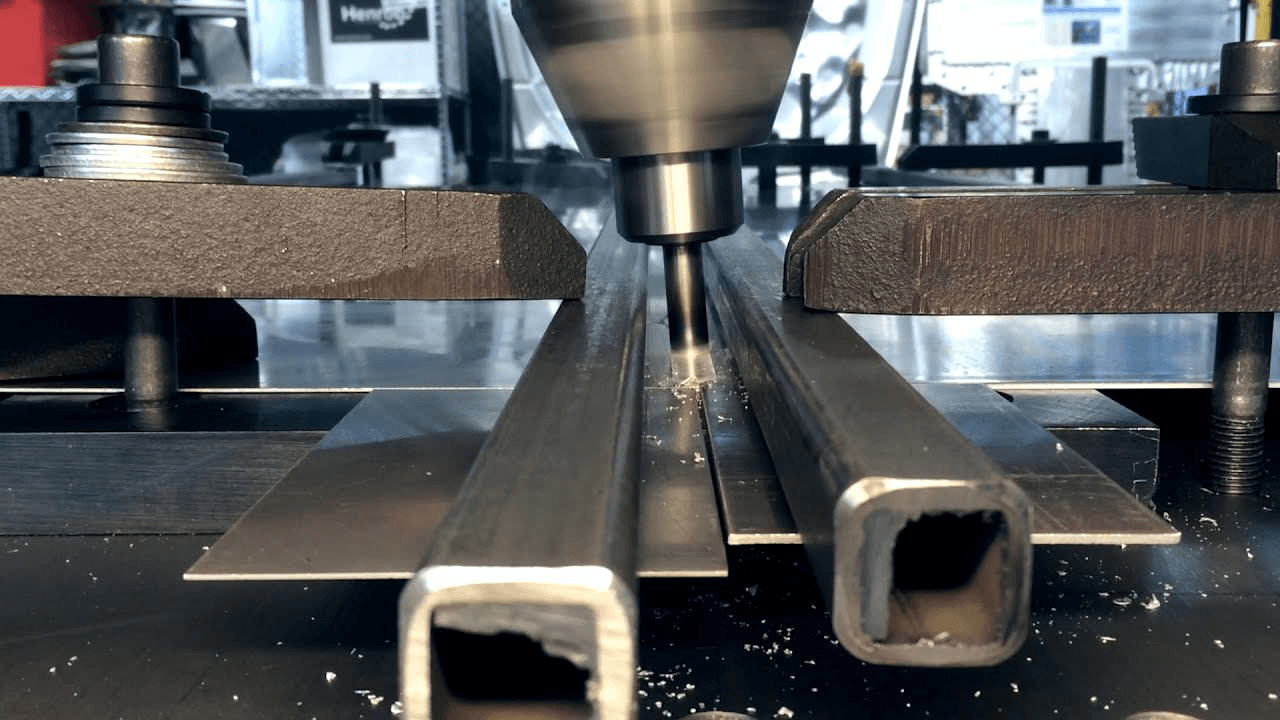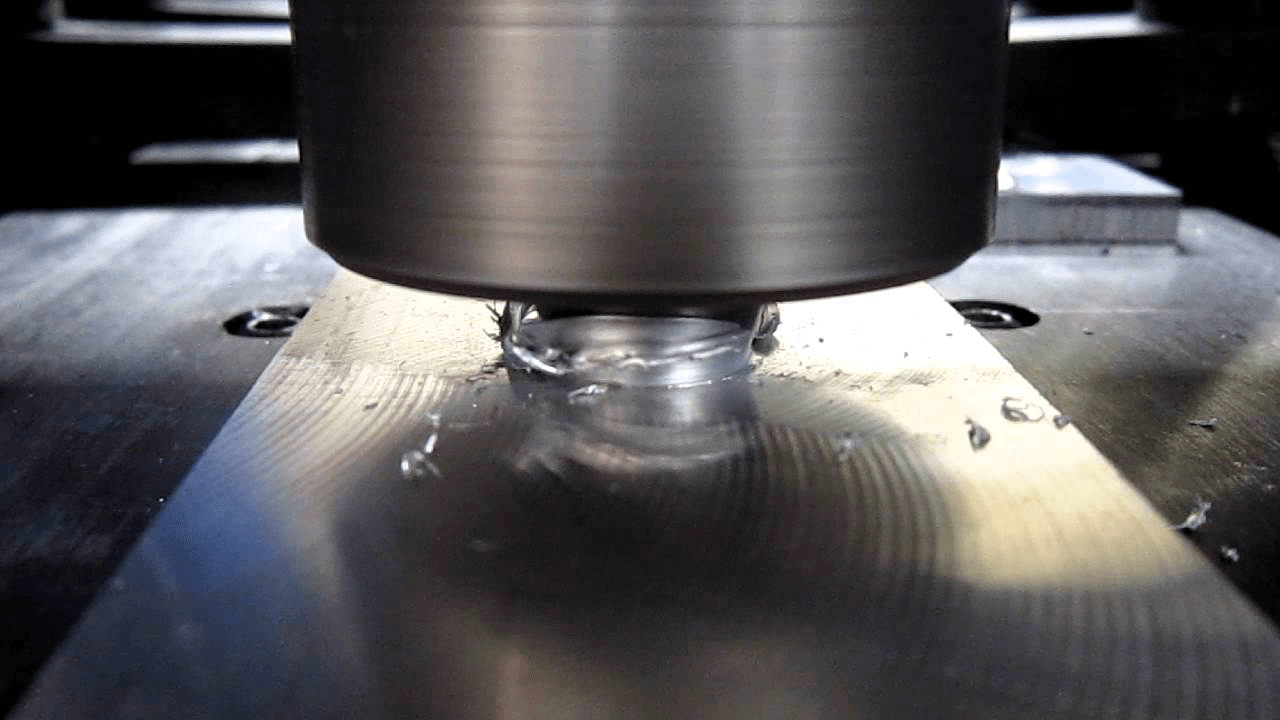Këtu është ajo që duhet të bëni për saldimin tuaj me fije fërkimi (FSW)?
2020-07-23Saldimi me fije fërkimi: Novatore dhe emision i ulët

Hyrje në Saldimi me fërkime (FSW) technology
Teknologjia inovative Saldimi me fërkime (FSW) është optimizuar vazhdimisht për dy dekada. Ai jo vetëm që ofron përparësi teknologjike, por karakterizohet gjithashtu nga një nivel veçanërisht i ulët i emetimeve. Kjo përfiton si përdoruesit, ashtu edhe ambienti.
Me proceset e saldimit termik, pjesa e punës duhet të shkrihet në zonën e bashkimit. Përveç problemeve të mundshme, ndodhin edhe ndryshime në vetitë e materialit dhe qëndrueshmëri të zvogëluar. Ndotësit ndahen gjithashtu në proceset konvencionale të saldimit.
Në saldimin termik, një flakë hark ose gaz krijon një pishinë saldimi. Dhe tymrat e saldimit të emetuara nga pishinat e saldimit janë në disa raste jashtëzakonisht të dëmshme për shëndetin. Në mënyrë të ngjashme, ajo sjell ndikim në klimë dhe mjedis.
Çfarë është Saldimi me Friction Stir (FSW) ?
Saldimi me fërkime (FSW) funksionon gjithmonë në temperatura nën pikën e shkrirjes. Kjo do të thotë që nuk ka pishinë shkrirjeje dhe gazrat mbrojtës të ajrit të ngushtë mund të shpërndahen plotësisht. Saldimi me fërkime shkakton zvogëlimin e emetimeve të dëmshme për shëndetin, mjedisin dhe klimën.
Thanks to its high efficiency and minimally invasive working method, Saldimi me fërkime (FSW)enables low-CO 2 productions even in standardized, reproducible large-scale production.
The reason for this lies in the highly specialized technology that works without the use of additional materials.
How does Friction Stir Welding (FSW) technology work?
The work pieces are first heated at the joint gap only by the frictional energy of the tool to just below the melting point.
This tool then mixes the plasticized material of the joining partners into a high-strength, non-porous and even gas-tight seam.
Saldimi me fërkime (FSW) karakterizohet gjithashtu nga një ekuilibër pozitiv i energjisë dhe burimeve. Përveç mungesës së gazit mbrojtës ose gazit të saldimit, nuk kërkohen materiale shtesë mbushëse.
Për shembull, tela me të cilën hendeku i nyjeve është i mbushur gjatë saldimit termik. Energjia e aplikuar përdoret pa humbje dhe menjëherë në prodhimin e tegelave të saldimit. Saldimi me fërkim me nxitje ka një efikasitet shumë të lartë dhe efikasitet të lartë të energjisë midis proceseve të bashkimit.
Metoda e Saldimit të Fërkimit Llokoçis (FSW) është veçanërisht e përshtatshme për metalet e lehta. Të tilla si:
- alumini dhe
- lidhjeve
Shumë prodhues të pjesëve për industrinë e lëvizjes përdorin këto metale të lehta. Kjo ndihmon për të zvogëluar peshën dhe konsumin e energjisë së anijeve, automjeteve dhe aeroplanëve.
This aspect is particularly important in the planning and construction of technologies in e-mobility. For reasons of efficiency, the energy source must be of the lowest possible mass. But this reduces the range of the vehicles.
In order to ensure their full performance, frequent, short reloading at the final stops is necessary. The heat generated in the batteries must be dissipated via cooling plates.
By connecting the individual components using Saldimi me fërkime a product has now been realized that optimally fulfills the cooling performance requirements. And at the same time, it reduces the weight to a necessary minimum.
In this way, an environmentally friendly manufacturing process promotes the implementation of future-oriented technology.
Saldimi me fërkime (FSW)involves joining metals below the melting point. This creates pressure- and vacuum-tight connections without pores and cracks.
The technology is also known as friction stir welding. Essaii has successfully used the economical and environmentally friendly welding process for many years in industries such as:
- Automobile
- Food
- Medical technology
- Hapësirë ajrore
- mechanical engineering
- transport
Saldimi me fërkime (FSW) is always finding new applications
The demands on materials are getting higher and higher. They should be light, stable and easy to work with. Therefore metal alloys are used. They have the advantages of the individual metals. But it reduces their disadvantages to a minimum.
Such components are joined by Saldimi me fërkime (FSW)methods. But these processing methods have disadvantages.
Common Friction Stir Welding (FSW) joining techniques
The shortcomings of riveting lie in:
- the higher material consumption and
- the associated higher weight,
- susceptibility of the drilling sites to corrosion and
- Their weakening of material due to the drilling process.
In fact, the process is very time-consuming since each rivet connection has to be checked individually.
Welding liquefies the material and changes its structure. Pore formation, caused by oxidation, further destabilizes them.
Friction Stir Welding (FSW) working flow
In order to overcome these disadvantages, friction stir welding (FSW) was developed in Great Britain. The welding takes place in the plastic phase so that the base material does not melt.
With great force, a rotating pin is pressed between two sheets and moved along the joining line. Due to the friction, the workpieces are heated and stirred so that the sheets join.
The welding takes place below the material melting point. So that no disadvantageous structural changes occur when the melt solidifies. This means that even difficult-to-weld aluminum alloys can be welded.
Nevertheless: although the process is applicable to all metals, it is mainly used for metals with a low melting point due to the high tool wear.
Nevertheless, the advantages outweigh. By handling the workpieces gently, the users achieve high static and dynamic seam strength.
And at the low temperatures there is no more smoke and nothing splashes. In fact, the energy consumption is also low, the work piece is warped only slightly and the entire process can be easily automated. The post-treatment of the weld seam, as it is necessary with Friction Stir Welding techniques.
Friction Stir Welding (FSW) working precautions
However, this process requires careful work. The materials must be clamped and aligned precisely since their position cannot be changed during the welding process.
Here, the material is exposed to heavy loads due to clamping. A back support is also required. It must consist of a material that has a higher melting point than the material to be processed.
At the end of the welding process, the rotating pin makes a notch in the material. It can lead to a crack if cyclically loaded.
To prevent this, another piece of metal is simply placed behind the material. So that the pin welds a little further than the workpiece is long.

However, further questions are still open. How can lap joints be welded efficiently? The question of welding metals with extremely different melting points has not yet been sufficiently clarified.
Përfundim
Alloys made of aluminum and magnesium, titanium or steel are particularly in demand here. Because the demands on modern materials are getting higher and higher.
Saldimi me fërkime (FSW)is particularly suitable for the economical joining of non-ferrous metals with a low melting temperature and mixed connections. Even hard-to-weld or foreign materials such as:
- aluminit
- Magnez
- Bakri
- Titanium can be joined




